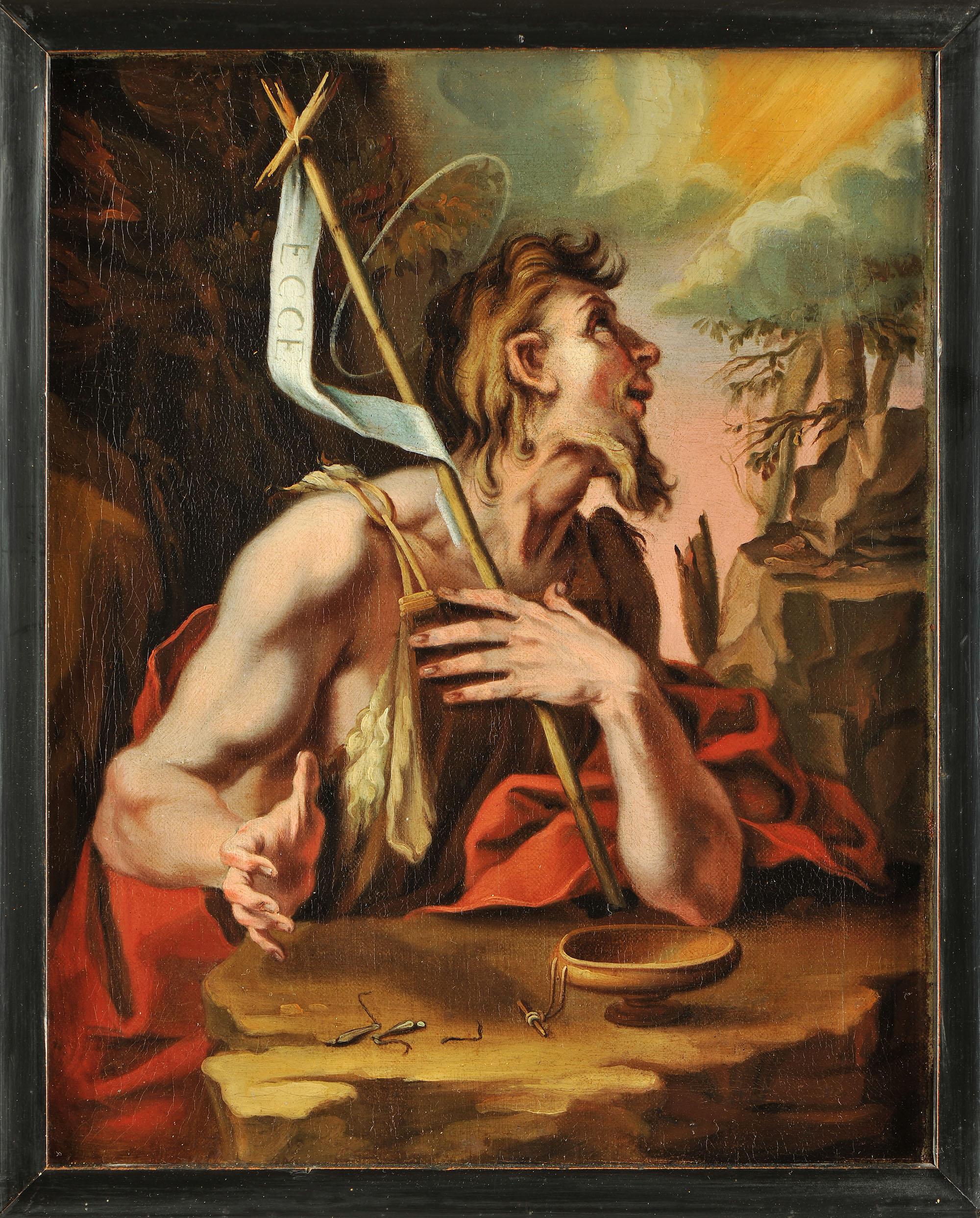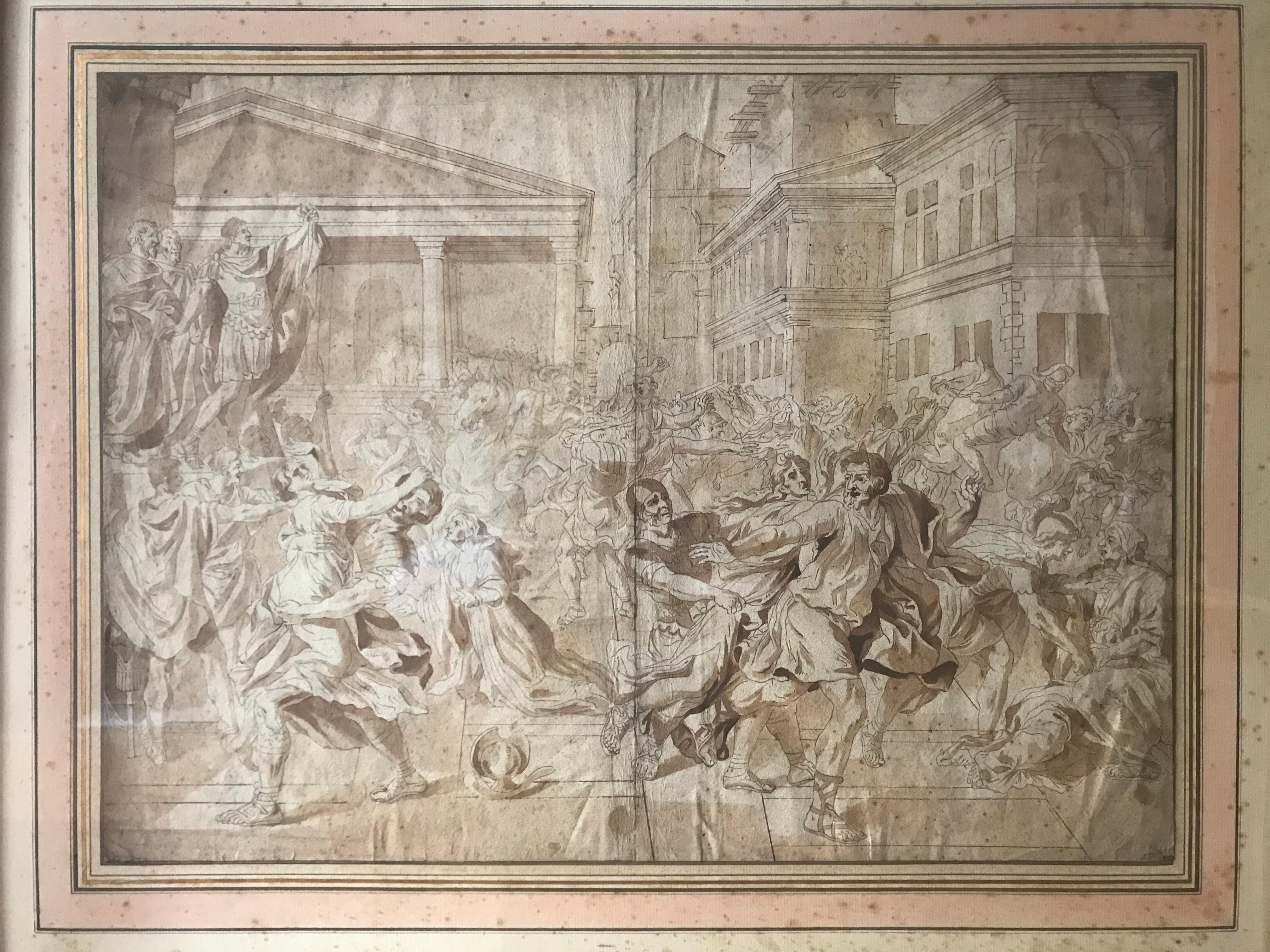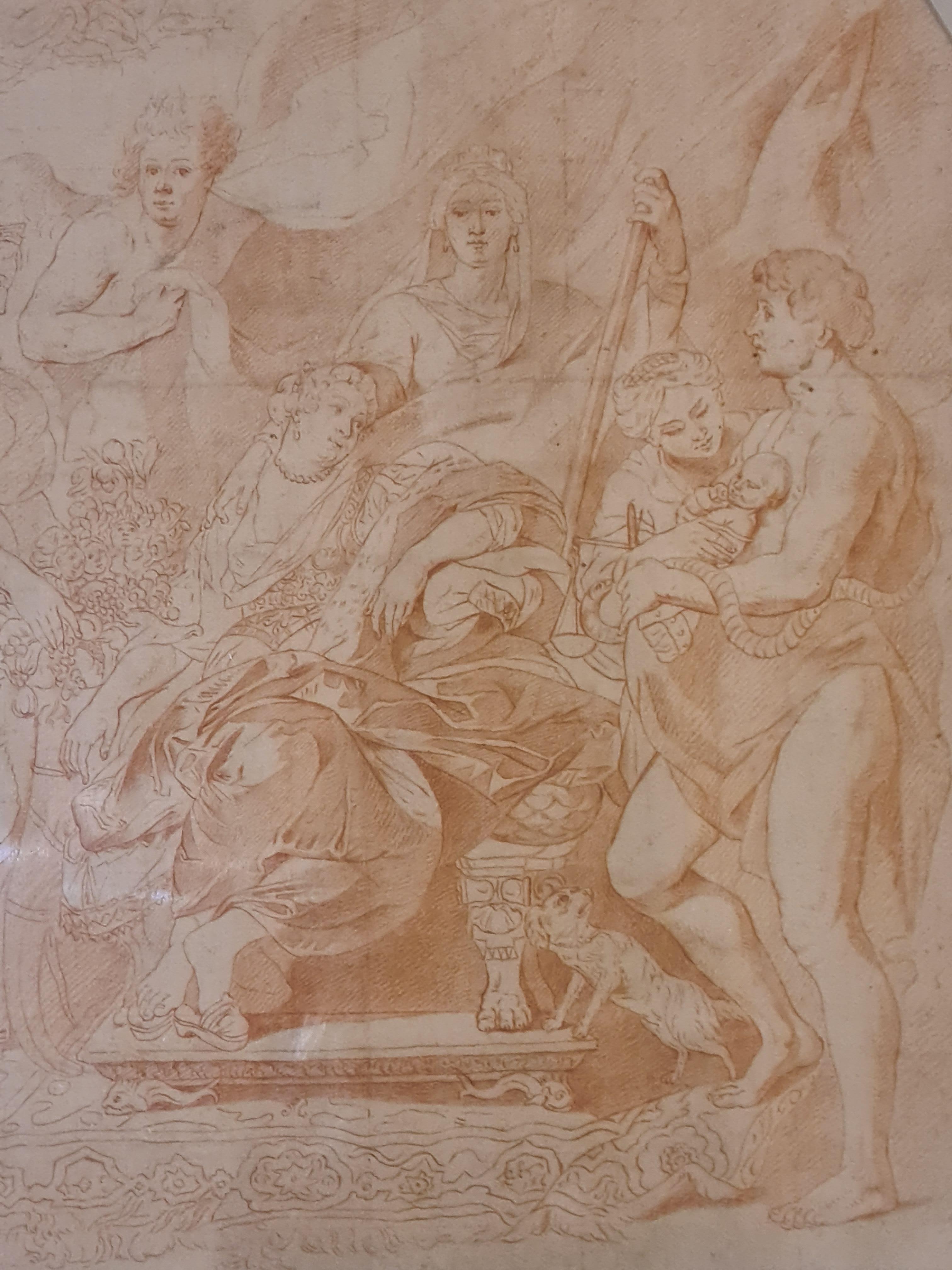Items Similar to "Wading Woman", drawing, ink, portrait
Want more images or videos?
Request additional images or videos from the seller
1 of 5
Dale Williams"Wading Woman", drawing, ink, portrait1994
1994
About the Item
Ink, litho crayon & collage on paper
- Creator:Dale Williams
- Creation Year:1994
- Dimensions:Height: 14 in (35.56 cm)Width: 13 in (33.02 cm)
- Medium:
- Movement & Style:
- Period:
- Condition:
- Gallery Location:Toronto, CA
- Reference Number:1stDibs: LU134525832341
About the Seller
5.0
Vetted Seller
These experienced sellers undergo a comprehensive evaluation by our team of in-house experts.
Established in 2016
1stDibs seller since 2020
32 sales on 1stDibs
Typical response time: 7 hours
- ShippingRetrieving quote...Ships From: Brooklyn, NY
- Return PolicyA return for this item may be initiated within 3 days of delivery.
More From This SellerView All
- "UNTITLED", Drawing on Paper, Ink and Acrylic, Nude Woman in Black, Cream, WhiteBy Natasha WrightLocated in Toronto, OntarioNatasha Wright's art probes the politics of representation of the female form. Gender, sexuality, vulnerability and power, seduction and aggression - th...Category
21st Century and Contemporary Feminist Nude Drawings and Watercolors
MaterialsPaper, Ink, Acrylic
- "#220 – PEACE", ink, pencil, gouache, collage, vintage book, hemingway, poetryBy Amy WilliamsLocated in Toronto, Ontario"#220 – PEACE" is from Amy Williams' series "A Farewell to Arms" – wherein the artist works directly onto page 220 of a found copy of Ernest Hemingway's W...Category
21st Century and Contemporary Contemporary Figurative Drawings and Water...
MaterialsGouache, Pencil, Paper, Found Objects, Ink
- "#70 – I AM TIRED", ink, pencil, gouache, collage, vintage, hemingway, poetryBy Amy WilliamsLocated in Toronto, Ontario"#70 – I AM TIRED" is from Amy Williams' series "A Farewell to Arms" – wherein the artist works directly onto page 70 of a found copy of Ernest Hemingway'...Category
21st Century and Contemporary Contemporary Figurative Drawings and Water...
MaterialsPaper, Found Objects, Ink, Gouache, Pencil
- "#187 – HE SAID IT WAS A LIE", ink, pencil, gouache, found vintage book, poetryBy Amy WilliamsLocated in Toronto, Ontario"#187 – HE SAID IT WAS A LIE" is from Amy Williams' series A Farewell to Arms – wherein the artist is working directly onto page 187 of a found copy of Er...Category
21st Century and Contemporary Contemporary Abstract Drawings and Waterco...
MaterialsPaper, Found Objects, Ink, Gouache, Pencil
- "POOR ME", watercolor, hand, bubble wrap, safety, protection, isolated, virusBy Fleur ThesmarLocated in Toronto, OntarioPOOR ME is a small watercolor on Arches paper by Fleur Thesmar. The artwork measures 7x5". Matted and framed in gold, it measures 13x11". Though completed over a year ago, it's a tim...Category
21st Century and Contemporary Contemporary Figurative Drawings and Water...
MaterialsWatercolor, Archival Paper
- "Fading Light", pencil, paper, portrait, cubist, classic arts, vanitasLocated in Toronto, Ontario"Fading Light" is pencil on paper measuring 12" tall by 9" wide. It's very sound structurally, with a figure composed against a classic pedestal (scrolls suggest a Greek Ionic column...Category
21st Century and Contemporary Cubist Portrait Drawings and Watercolors
MaterialsPaper, Pencil
You May Also Like
- Fenzoni, Painting AND preparatorial Drawing, John the Baptist, Italy RenaissanceBy Ferrau FenzoniLocated in Greven, DEThe painting and the preparatory drawing are offered together. Provenance Private collection, Germany, Trier, c. 1980- 2013 Saint John the Baptist Brown ink and wash over red chalk on oatmeal paper 31 x 20.5 cm Inscribed: „Ferrau Fenzonio da Faenza invt. esque … imp. da Fran. Villamena …“. bears the collector's mark of Henry Scipio Reitlinger (1882-1950; Lugt 2274a) on a tiny label glued to the verso On the reverse is a partial drawing of a Pieta, pricked for transfer. Provenance New York, Doyle, 14. October 2015, No. 6 The painting and the preparatory drawing resemble the composition of an engraving after Ferraù Fenzoni by Francesco Villamena. Drawing, engraving and painting are almost identical, except for minor differences. Even the measurements nearly correspond: painting (32 x 25,5 cm), drawing (30 x 20,5 cm), engraving (31,1 x 23,5 cm). Dr. Guiseppe Scavizzi confirmed the attribution of the present panting to Fenzoni and he dates it to c. 1590. The inscription on the drawing reads “Ferrau Fenzonio da Faenza invt. esque. . . imp. da Fran: Villamena . . .”. The engraving’s inscription also lists place and date “Ferra Fensionius inventor/F. Villamoena sculpsit Rome/Aspectu fruitur… antra puer/cum Privilegio… 1613”. Interestingly, the engraving is not mirrored as it is in most printing processes. Painting, drawing and engraving are not reversed but the same. It is remarkable to note that there are further paintings by Fenzoni which were engraved in the same order and not reverted. They also show strong parallels regarding the compositions and the measurements (see for example “Deposition of Christ” ). Ferraù Fenzoni was an Italian painter mainly active in Todi. He is also called Il Faenzone after his birthplace (Faenza). He apprenticed in Rome during the papacy of Gregory XIII and contributed to numerous fresco cycles under pope Sixtus V, such as the Loggia della Benedizioni in the Lateran Palace, the frescoes on the walls and vaults of the Scala Santa of the adjacent Basilica of San Giovanni in Laterano, and the decoration in the Sistine library. His expressive canvases straddle the styles of Mannerism and Baroque. In 1594, he moved to Todi. A “Last Judgement” by him is housed in the cathedral of Todi. He returned to Faenza in 1599, where he decorated chapels in the cathedral from 1612 to 1616. In 1622, he completed a “Deposition”, now in the local Pinacoteca. In 1640, Fenzoni was named “cavaliere dello speron d’oro” by Cardinal Colonna and, on 25th April 1634, he was nominated vicar and “castellano of Granarolo”. Fenzoni‘s style is characterized by a mixture of the Mannerism of the Northern Netherlands and the Italian Baroque. Saint John the Baptist, Old Master, 17th Century, By Fenzoni, Religious Scene, Rome Art...Category
16th Century Mannerist Figurative Paintings
MaterialsCanvas, Oil, Handmade Paper
- Old Master Drawing, Baroque, Jacob de Wit, Allegory of Victory, Putti, ShipsBy Jacob De WitLocated in Greven, DETwo putti with symbols of war and victory (cannons, cannonballs, armour, anchor, lion's head, laurel branch/ olive branch, flag, staff with helmet) in pediment triangle. Probably a d...Category
Late 17th Century Baroque Figurative Drawings and Watercolors
MaterialsPaper, Crayon
- The Rape of the Sabine Woman, ink and pencil. After Nicolas PoussinBy (Circle of) Nicolas PoussinLocated in Brooklyn, NYPoussin’s subject is the abduction of the Sabine women. Historically, this subject was known as The Rape of the Sabines (rape being derived fro...Category
Early 17th Century Baroque Figurative Drawings and Watercolors
MaterialsInk, Paper, Pencil
- 18th Century Sanguine Drawing, La Naissance de Louis XIII, After Rubens.Located in Cotignac, FR18th Century French Sanguine drawing, possibly a preparatory sketch for the painting by Nattier after the painting by Rubens. Presented in shaped 'marie-louise' mount in plain gold wood frame with collection label. The subject is the Queen Marie de' Medici seated on a grand throne, the baby is in the arms of Health while Justice looks over him. Fecundity brings a cornucopia of fruit with the heads of the other children the Queen will bear. The Sun rides his chariot across the sky to indicate that Louis XIII was born in the morning and the calm figure of France surveys the whole scene. An engraving exists (see the Wellcome Collection) of this same image: 'The birth of King Louis XIII', after the engraving by B. Audran the younger after the painting by Jean-Marc Nattier after the oil painting of Peter Paul Rubens in the Louvre 'La Naissance du Dauphin (future Louis XIII) à Fontainebleau, le 27 septembre 1601'. Jean-Marc Nattier (17 March 1685 – 7 November 1766) was a French painter. He was born in Paris, the second son of Marc Nattier (1642–1705), a portrait painter, and of Marie Courtois (1655–1703), a miniaturist. He is noted for his portraits of the ladies of King Louis XV's court in classical mythological attire. He received his first instruction from his father, and from his uncle, the history painter Jean Jouvenet (1644–1717). He enrolled in the Royal Academy in 1703 and applied himself to copying pictures in the Luxembourg Palace, making a series of drawings of the Marie de Médici painting...Category
18th Century Baroque Figurative Drawings and Watercolors
MaterialsClay, Paper, Chalk, Ink
- Orpheus and the Animals, A Study after an Ancient Bas-ReliefLocated in New York, NYInscribed “55” and “218” in the lower right Watermark: Heawood 1351 Laid down on historic Cassiano Del Pozzo mount (Mount Type A, 531 x 402 mm) Provenance: Commissioned by Cassiano dal Pozzo (1588–1637) for his Museo Cartaceo (Paper Museum) and kept in the library of his palazzo, via dei Chiavari, Rome Transferred with the entire dal Pozzo collection by fidecommesso to his younger brother, Carlo Antonio dal Pozzo (1606–1689); by descent to his second son: Gabriele dal Pozzo (d. 1695); by descent to his wife: Anna Teresa Benzoni and after her remarriage in 1697, the Marchesa Lancellotti de’ Ginnetti (d. 1736); by descent to their son: Cosimo Antonio dal Pozzo (d. 1740); by whom sold with the Dal Pozzo library in 1703 to: Pope Clement XI for the Vatican Library; by whom transferred as part of the Museo Cartaceo in January 1714 to his nephew: Cardinal Alessandro Albani (1692–1779), Palazzo ‘alle Quattro Fontane’ in Rome; by whom sold in 1762 to: James Adam, agent for the British Royal Librarian Richard Dalton (1715–1791) King George III of England, Buckingham House Among the sheets of the ‘Museo Cartaceo’ appropriated by Richard Dalton during a reorganization of the drawings, circa 1786-1788; his estate sale, Greenwood’s, London, 11-19 May 1791; where acquired by: John MacGowan...Category
16th Century Baroque Figurative Drawings and Watercolors
MaterialsPaper, Ink, Pen
- Heinrich Adam Elias Borny (1742 - 1778) Soldier - 18thC Ink Drawing - GermanyLocated in Meinisberg, CHHeinrich Adam Elias Borny (German, 1742-1778) • Late baroque Ink and pen drawing on laid paper (no watermark) • Sheet, ca. 29.4 x 22.7 cm • Imag...Category
1760s Baroque Figurative Drawings and Watercolors
MaterialsInk, Laid Paper
Recently Viewed
View AllMore Ways To Browse
Collage Woman
Ink Lithos
Dale Williams
Ancient Egypt Watercolor
Vintage Anatomical Drawings
Audrey Anastasi
Van Gogh Original Watercolor
Liv Design Art
Simon Goldberg
9th Century Watercolor Paintings
Erte Watercolor
Muybridge Horse
Vintage Umbrella Drawing
Chinese Xix
Fashion Illustration Laura Ashley
Roz Jennings
Moulin Rouge Costume
Subway Maps





